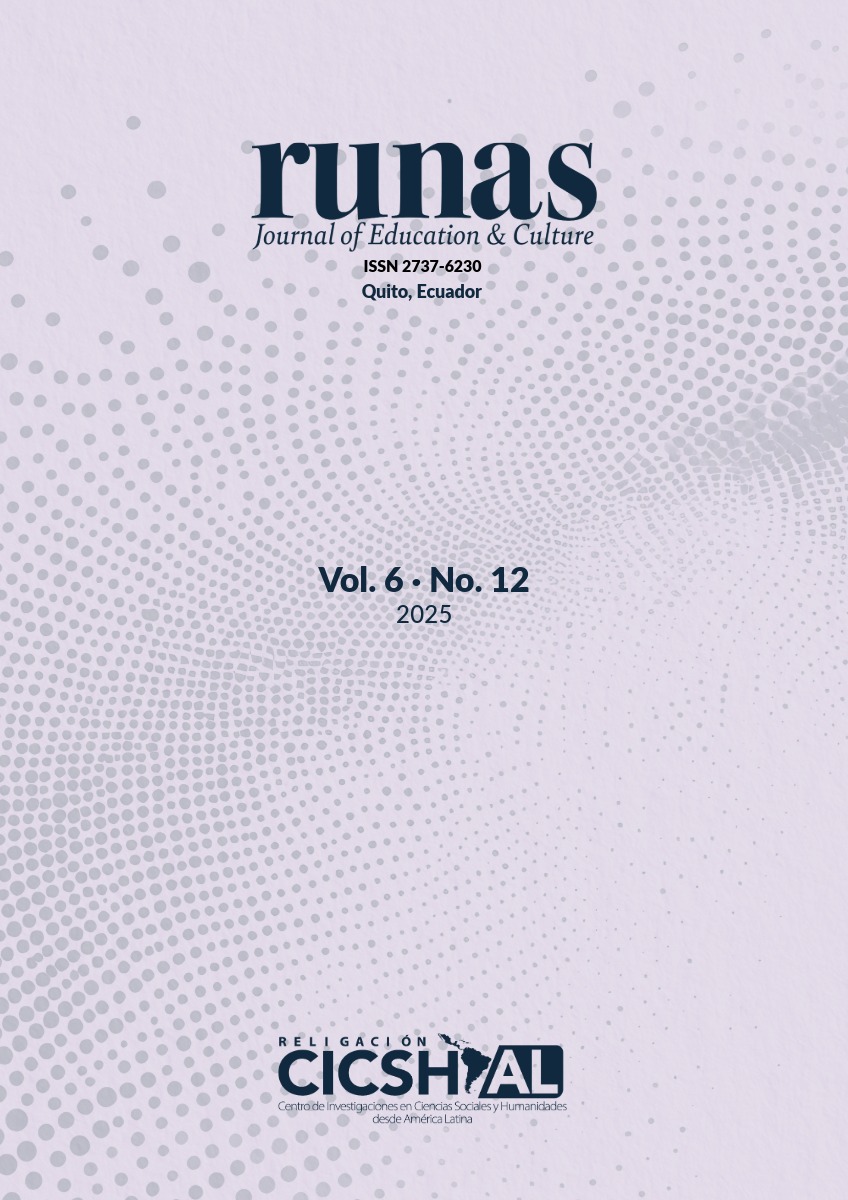Abstract
TikTok has transformed university students' interaction and participation, strengthening their sense of belonging and influencing their academic and social lives. Its popularity has led universities to adapt to new forms of digital communication, consolidating TikTok as an essential platform for authentically connecting with the student community. This paper aims to analyze the effectiveness of interactive content strategies on TikTok and their impact on the university community. The Catholic University of Cuenca, which uses TikTok to foster student participation, serves as the case study for this research. The methodology used a mixed approach, integrating qualitative and quantitative techniques, including in-depth interviews with experts, surveys, and observation sheets. This approach allowed exploring the effectiveness of interactive content strategies on TikTok and student engagement on the university’s social media. In conclusion, implementing effective content strategies on TikTok enhances connections with students, promotes student participation, and strengthens the sense of community and institutional visibility, thus consolidating the university's brand on social media.
References
Alcolea, P., & Núñez, F. (2021). Incursion of the social network TikTok in the corporate communication departments of 35 Spanish private universities. Comparison with the social network Instagram. UdiMundus. https://lc.cx/KYfbFS
Anderson, K. (2020). Getting acquainted with social networks and apps: it is time to talk about TikTok. Library Hi Tech News, 37(4), 7-12. https://doi.org/10.1108/LHTN-01-2020-0001
Banco Interamericano de Desarrollo; BID Lab. (2021). Transformación digital en la educación superior América Latina y el Caribe.
Baysal, S. (2014). Working with generation X and Y in generation Z period management of different generations in business life. Mediterranean Journal of Social Sciences, 5(19), 281-229. https://doi:10.5901/mjss.2014.v5n19p21
Brooke, A., & Anderson, M. (2021). Social Media Use in 2021. https://www.pewresearch.org/internet/2021/04/07/social-media-use-in-2021/
Castells, M. (2009). Comunicación y poder. Alianza.
Ceci, L. (2024). TikTok - statistics & facts. Statista. https://www.statista.com/topics/6077/tiktok
de la Hera, C. (2020). Historia de TikTok: así nació y evolucionó la red social a la que todos quieren imitar. Marketing. https://lc.cx/UbMXaQ
Deloitte Insights. (2020). 2020 global Marketing Trends. Bringing authenticity to our digital age. https://lc.cx/R4vpiX
Denzin, N. K., & Lincoln, Y. S. (2018). The Sage Handbook of Qualitative Research. Sage Publications.
Dillman, D. A., Smyth, J. D., & Christian, L. M. (2014). Internet, Phone, Mail, and Mixed-Mode Surveys: The Tailored Design Method. Wiley.
Henneman, T. (2019). Beyond Lip-Synching: Experimenting with TikTok Storytelling. Teaching Journalism & Mass Communication, 10(2), 1-14.
Hernández-Nieto, R. A. (2002). Contribuciones al análisis estadístico: Coeficiente de validez de contenido y confiabilidad. Universidad de Los Andes.
HubSpot. (2022). State of Marketing Report. https://www.hubspot.com/
Jagersma, J., & Parsons, J. (2011). Empowering Students as Active Participants in Curriculum. Design and Implementation. New Zealand Journal of Teachers’ Work, 8(2), 114 -121.
Kemp, S. (2023). Digital 2023 Ecuador. Hootsuite & We Are Socia. Data reportal. https://datareportal.com/reports/digital-2023-ecuador
Kuth, G. (2008). High-Impact Educational Practices: What They Are, Who Has Access to Them, and Why They Matter.
Morais, D. (2020). TikTok. Análisis de la irrupción de la nueva Red Social en Internet: análisis de las claves de su éxito y sus posibilidades publicitarias [Tesis de grado, Universidad de Valladolid].
Morning Dough. (2024). Liberar el crecimiento con TikTok: estrategias de marketing para triunfar en la plataforma social más emocionante del mundo. https://lc.cx/ytm21t
Nelson, R. (2023). Exposed: How Universities Leverage TikTok Trends for Student Recruitment. Academic Press.
Peña-Fernández, S., Larrondo-Ureta, A., & Morales-i-Gras, J. (2022). Current affairs on TikTok. Virality and entertainment for digital natives. Pofesional de la información, 13(1).
Peñalver, P. (2017). Qué es content marketing: beneficios y tips para el éxito. We are marketing. https://lc.cx/GLJW-A
Pérez, E., & Rodríguez, J. (2022). Análisis del uso de espacios virtuales en educación superior. Apertura, 14(1).
Quiroz, N. (2020). TikTok. La aplicación favorita durante el aislamiento. Revista Argentina de Estudios de Juventud, dossier temático.
Rashidian, N., Civeris, G., Brown, P., Bell, E., & Hartstone, A. (2019). Platforms and Publishers: The End of an Era. Columbia Journalism Review. https://lc.cx/Vzhjx6
Rodríguez, A. (2023). Cómo desarrollar tu estrategia de contenido interactivo. https://lc.cx/QNzEP3
Ruvic, D. (2020). Cuarentena: Tik Tok ya superó los 2.000 millones de descargas. Infobae. https://lc.cx/oZ0eNp
Sánchez, P., & Muñoz, R. (2019). Análisis de métricas en redes sociales: Fundamentos y aplicaciones. Editorial Académica.
Sandoval, M., & Aguado, J. (2021). Estrategias digitales en educación superior: Enfoques innovadores para el engagement estudiantil. Editorial Universitaria.
SproutSocial. (2021). The Future of Social Media: New Data for 2021 & Beyond. https://sproutsocial.com/insights/data/harris-insights-report/
TikTok. (2024). Acerca de los complementos interactivos. https://ads.tiktok.com/help/article/about-interactive-add-ons?lang=es
Valdés, R., Manghi, D., & Godoy, G. (2020). La participación estudiantil como proceso de inclusión educativa. Sinéctica, 55.
Viteri, F., Herrera, L., & Bazurto, A. (2018). Importancia de las Técnicas del Marketing Digital. RECIMUNDO: Revista Científica de la Investigación y el Conocimiento, 2(1), 764-783.
We Are Social. (2023). Digital 2023. La guía definitiva para un mundo digital en evolución. https://wearesocial.com/es/blog/2023/01/digital-2023/

This work is licensed under a Creative Commons Attribution-NonCommercial-NoDerivatives 4.0 International License.
Copyright (c) 2025 Renata Cecilia Vintimilla Luzuriaga, Cristian Andrés Erazo Álvarez





